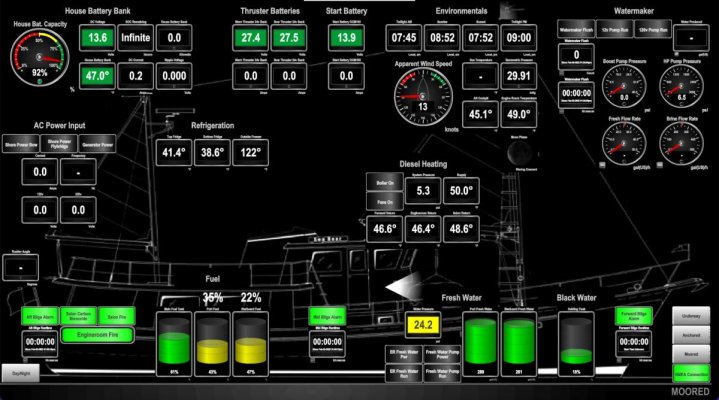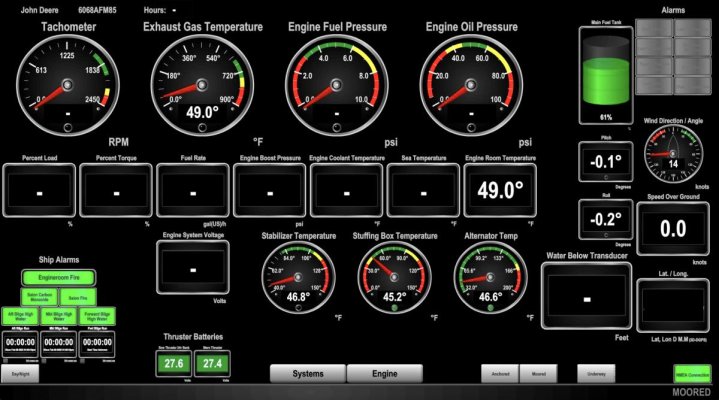Arthurc
Guru
Ive been working to overhaul my monitoring in N2KView and curious what others are using and what you are looking at. I created 3 pages:
-"Systems" for when the boat is moored or on the hook, I remotely check on this regularly when not aboard.
-"Engine" for when I am getting things started up and looking at point in time info underway.
-"Engine Trends" which is the key engine metrics but a view over time, I use this the most when underway but its not much to show with the engines off so no picture attached.
Would love to see what other folks are using and if you have any glaring things I'm missing...
Ignore the few wonky things (thermocouple failed in the freezer, shore power is plugged in but I didn't have time to hook up the bow input signal, etc)
Cheers
AC
-"Systems" for when the boat is moored or on the hook, I remotely check on this regularly when not aboard.
-"Engine" for when I am getting things started up and looking at point in time info underway.
-"Engine Trends" which is the key engine metrics but a view over time, I use this the most when underway but its not much to show with the engines off so no picture attached.
Would love to see what other folks are using and if you have any glaring things I'm missing...
Ignore the few wonky things (thermocouple failed in the freezer, shore power is plugged in but I didn't have time to hook up the bow input signal, etc)
Cheers
AC


